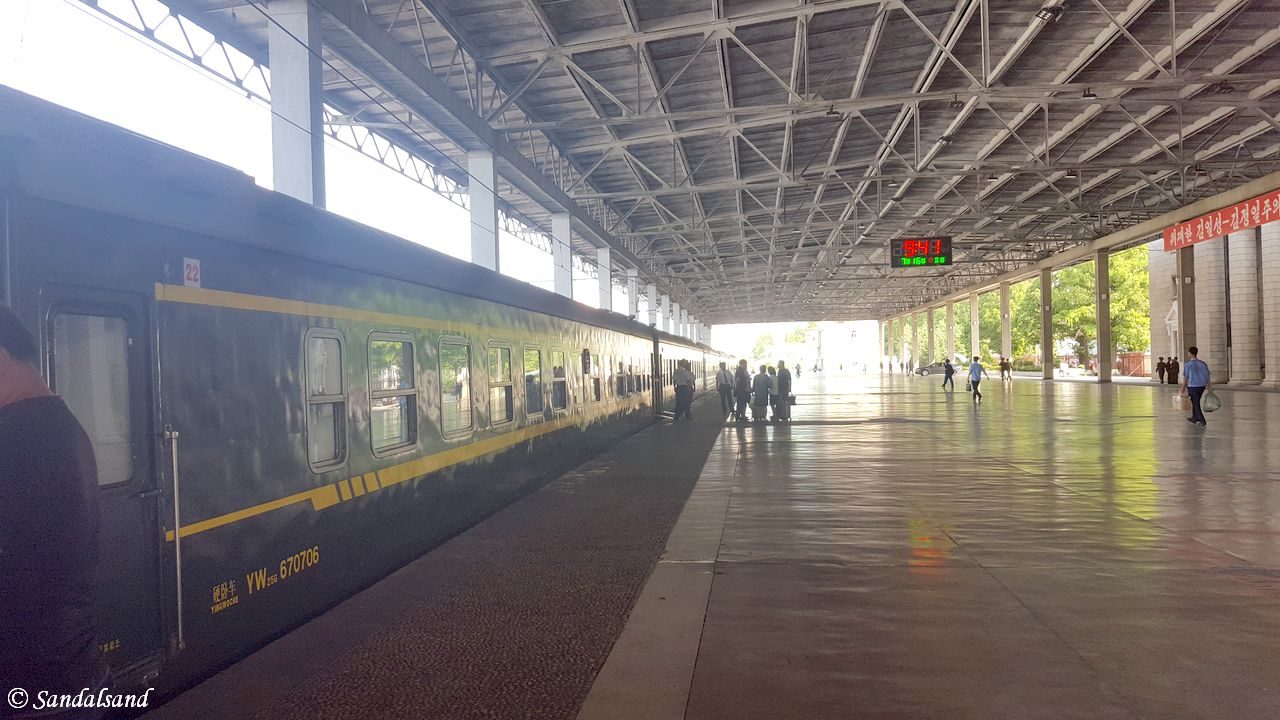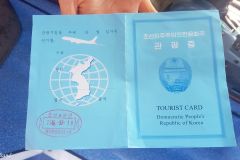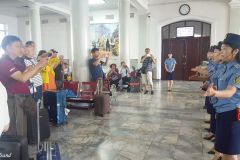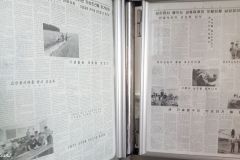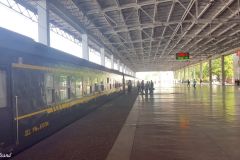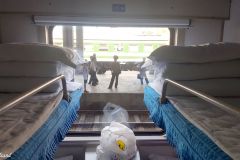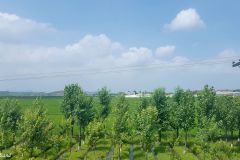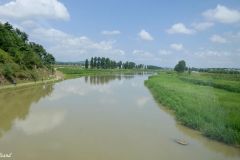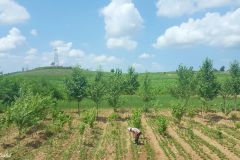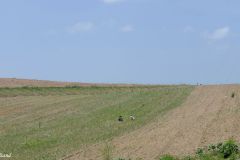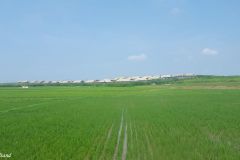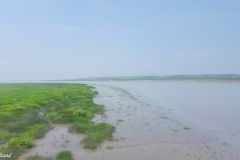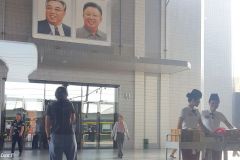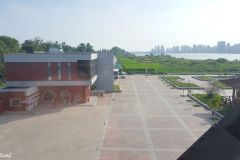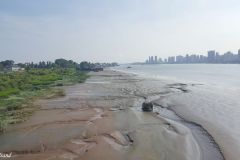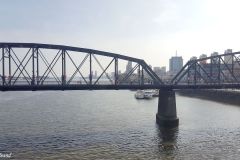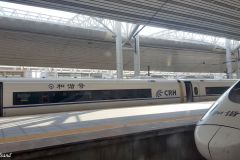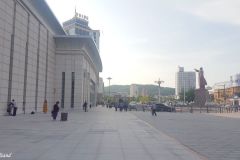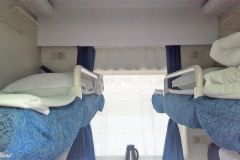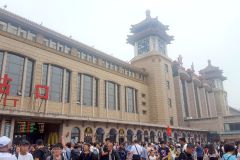Visitors to North Korea are often left with the choice between flying in and out of Pyongyang from Beijing, or take the train back to China. I wanted to have a more adventurous return, cheaper too, and to see more of the North Korean countryside. So I decided on the train option and do not regret it.
Pyongyang station
Currently, it is possible to take a train to China from four countries: Vietnam, Mongolia, Russia and North Korea (DPRK). Some years ago I travelled from Mongolia to Beijing. This article is about the journey from Pyongyang in the DPRK to Beijing. The journey involves a change of trains in the Chinese border town of Dandong, on the Yalu River.
My guides picked me up at the hotel, I got my passport back and they also gave me the train ticket. In North Korea they will keep your passport while in the country, for your protection. The guides followed me into the train station and did not leave until the train was in motion. That was kind of strange, because in North Korea the guides fill follow you everywhere, and be with you at all times.
At the station I was led into a large hall for a long wait. This particular hall was for foreigners, and all the rest were Chinese. I would estimate that the ratio of Westerners to Chinese on this day was about the same ratio as the number of annual visitors to the DPRK, one in two hundred. (There are about 1,000 Westerners coming to the DPRK each year, compared to 180,000 Chinese tourists.)
The Koreans provided entertainment for us. All of a sudden a group of uniformed women entered the hall and took up position. With waiving hands they enthusiastically performed what I assumed was propaganda songs. It was such a surprise. The Chinese and I picked up our cameras to record this extremely strange moment.
On the train to China
The train from Pyongyang to the border is a day train and takes about five hours. It moves very slowly past small train stations, makes no stops and the view from the window is good. Small hills, endless rice paddies and maize fields. The scenery was very much like the one I had experienced on my road trips the previous days.
This was an international train and it did not stop until it reached Sinuiju Cheongnyeon Station, the last station before the border. There was a very thorough customs and immigration check. My travel agency had informed me that it would take about two hours, and I suppose it did. They went through my luggage, even my toiletry bag. I filled in forms and returned the Visa form I had received upon entering the country – at the Pyongyang Airport. One does not get a passport stamp in the DPRK. I noticed that the inspection of my luggage was considerably more detailed than with the Chinese.
A conversation with fellow passengers
Like I said, there were many Chinese groups on this train. Actually it is a Chinese train as well, or at least the carriages were. I was let into a sleeping car and received a bottom bed. As there was no point in sleeping, I gladly allowed my co-travellers to sit down on my bed. It turned out that the people around me was part of a group, largely from the Nanjing area, and their Chinese-Korean speaking guide. She was from Dandong and spoke English very well too. That meant we had a really nice conversation going in a matter of no time. The Chinese around us would join in, some with age-old understanding of English, or they would use their guide as an interpreter.
A young boy, about 12 years of age, was travelling with his grand-parents. At first he would sit and listen to us talking, and when I invited him into the conversation he was more than willing to practise his English. He was very good for his age, and we would all have a very joyful ride together – exploring likenesses and differences between Norway and China with regard to population density and school systems.
Crossing the Yalu River
Slowly the train started to roll out of the Sinuiju train station on its last leg towards China. The Yalu River forms the border between The People’s Republic of China and The Democratic People’s Republic of Korea for several hundred kilometres. Near the river mouth, where it empties into the Yellow Sea, there are two cities. Sinuiju and Dandong on the Chinese side. A railway bridge across the river opened in 1911 but was on the Korean side bombed and destroyed by the Americans in 1953, during the Korean War.
Running next to it is the Sino-Korean Friendship Bridge from 1943. Although it was bombed too, it remains in use as the single most important connection between the two countries. During the Korean War the American commander, General Douglas MacArthur proposed to nuke the entire Yalu River region. His aspiration was to stop the Chinese from entering Korea for generations to come. Luckily, Washington managed to stop him.
Today the remainder of the Yalu River Broken Bridge has been turned into a tourist attraction and historical site. From the windows of our train slowly moving across the other bridge, we would notice how popular it was to walk out from Dandong to a viewing platform on the end. From there anyone would be able to gaze into the Hermit kingdom, North Korea. So near and yet so far away.
Dandong and the night train to Beijing
Chinese customs and immigration checks were fast. In a few minutes I was out on the square in front of the station building. I had a couple of hours to get something to eat and have a quick look around, before my train for Beijing would depart. The Chinese on the train and my travel agent had advised me to eat before I boarded the night train, because food in the restaurant car is nothing to boast of. So I went looking for a place to eat. I skipped a Kentucky Fried Chicken outlet (China is definitely not North Korea) and found another place.
Pyongyang and the other cities I had visited in North Korea had at times appeared like empty, with only a few people on the pavements and very few cars on the roads. Dandong felt very normal to me, there were people and cars everywhere.
Back in the train station I sat down in the lobby to wait for the departure call. The authorities would let passenger onto the platforms one train at a time. Here I noticed several Western backpackers, presumably not coming from North Korea. Eventually we were allowed through the gate and I found my carriage and bed.
I had received the ticket for the train from Dandong to Beijing before I left Beijing for the DPRK. This was a night train and I had decided on the most comfortable alternative, a soft sleeper. That is the Chinese expression for a bed complete with pillow and dune inside a four-bed compartment with a door to the corridor. Hard sleepers are like the name implies, a bit harder to sleep on and each compartment will hold six beds and has no door.
The arrival in Beijing
I slept alright and woke up in the morning in good time before the train arrived at the Beijing railway station. There I went with the crowd outside and gazed up on the familiar clock tower of this 1959 station building. I had been here twice before, the first time in 1985 and the second in 2011.
I made it easy for myself and joined a queue at the taxi rank. At my hotel I had a couple of hours of relaxation and then went out to explore familiar and some unfamiliar attractions in the Chinese capital. I was completely on my own. There was no hotel assistants who demanded to hold on to my passport, no guides who followed me. I was free to go wherever I myself decided, I could take whichever metro line and get off at any station. I ate where I wanted and when I saw fit to do so. The contrast to what I experienced in the DPRK was huge.
Read more
Read all North Korea and China entries.
This is the map of my travels in the Democratic People’s Republic of Korea (DPRK), or simply North Korea in 2019. The black line on the map shows the route to the Chinese border and the town of Dandong, a distance of about 200 km.
